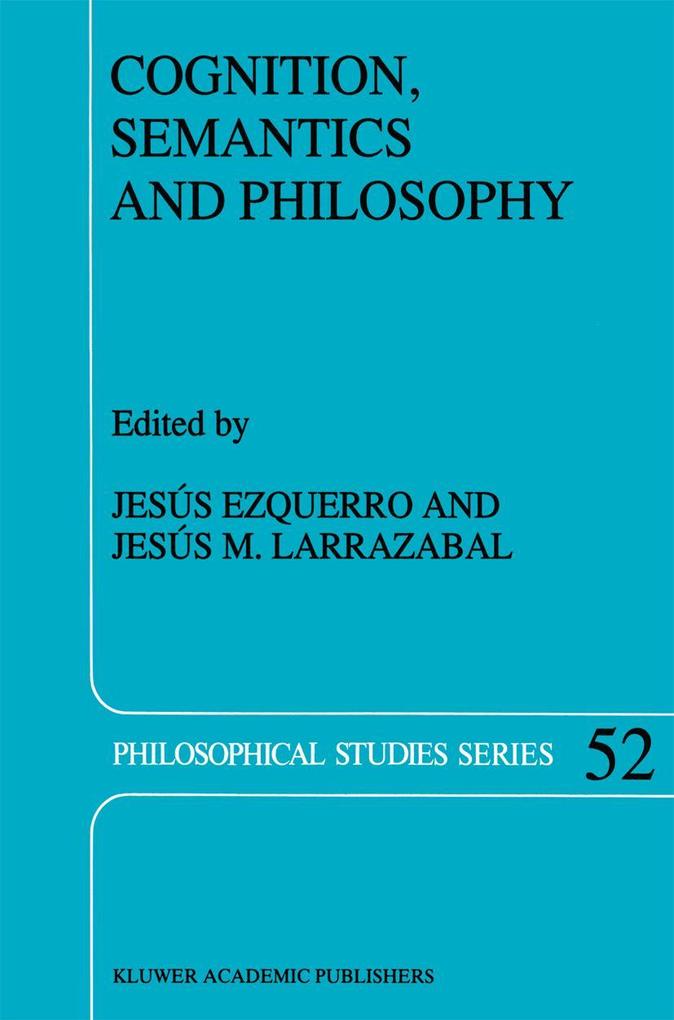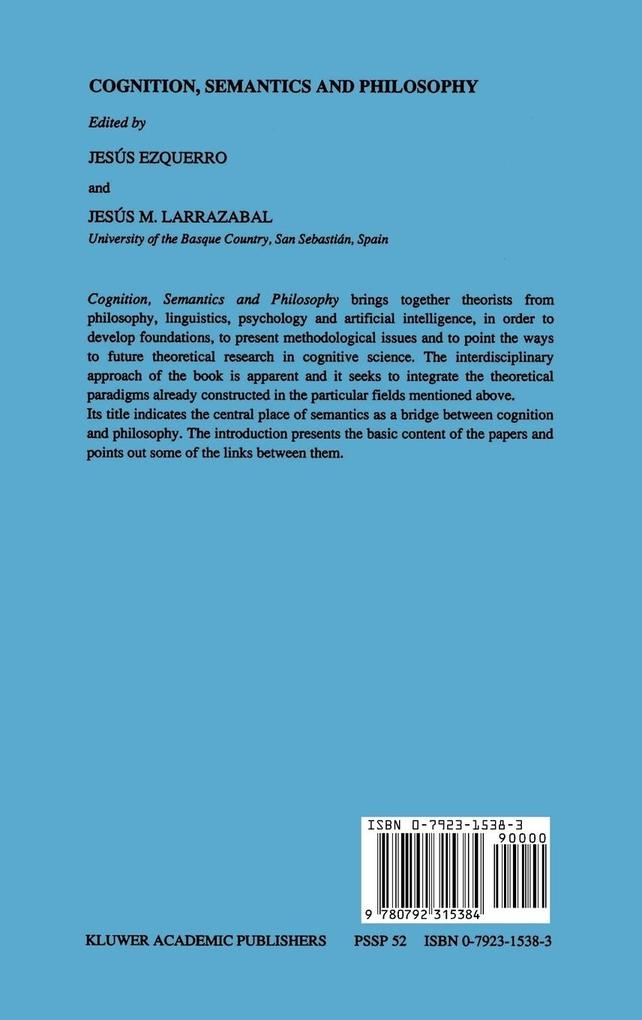THE PLACE OF PHILOSOPHY IN COGNITIVE SCIENCE During the last few years, many books have been published and many meetings have been held on Cognitive Science. A cursory review of their contents shows such a diversity of topics and approaches that one might well infer that there are no genuine criteria for classifying a paper or a lecture as a contribution to Cognitive Science. It is as though the only criterion is to have appeared in a book or in the programme of a meeting or title we can find the expression " . . . Cognitive Science" in whose name or something like that. Perhaps this situation is due to the (relative) youth of the field, which is seeking its own identity, still involved in a process of formation and consolidation within the scientific community; but there are actually deep disagreements about how a science of the mind should be worked out, including how to understand its own subject, that is, "the mind. "While for some the term makes reference to a set of phenomena impossible to grasp by any scientific approach, for others "the mind" would be a sort of myth, and the mental terms await elimination by other more handy and empirically tractable terms.
Inhaltsverzeichnis
1: Animal Cognition and Human Cognition: A Necessary Dialogue. - I. Introduction. - II. Characterization of Comparative Cognition. - III. Cognitive Modules and Evolution. - IV. Two Goals of Comparative Research: General Processes and Evolutionary Sequences. - V. Consciousness and Cognition. - VI. Conclusions. - 2: User Modelling in Knowledge-Based Systems. - I. Introduction. - II. Situations of Interactive Communications. - III. The Content of the User Model. - IV. Characteristic Dimensions of a User s Model. - V. Domain-Knowledge: Shallow Versus Deep Modelling. - VI. Modelling Intentions. - VII. Building a User s Model. - VIII. Learner s Model. - IX. Conclusion. - 3: Changing Beliefs Rationally: Some Puzzles. - I. Background. - II. A Justification of Generalized Conditionalisation. - III. The Judy Benjamin Problem. - IV. An Apparent Counterexample to Simple Conditionalisation. - V. The Three Prisoners. - VI. Judy Benjamin Again: The Strong Strategy. - VII. Independence. - 4: On the Representation of Linguistic Information. - I. Introduction. - II. The Modularity Hypothesis. - III. Grammar, Pragmatics and Modularity. - IV. Interdisciplinarity in the Analysis of Linguistic Information. - V. Disjunct Adverbials Pragmatically Oriented Towards the Speaker or Hearer. - VI. On The Representation of Disjunct Constituents: A Multidimentional Approach. - VII. Conclusions. - 5: Modelling Memory for Models. - I. Introduction. - II. Two Senses of Model . - III. Models in Working Memory. - IV. Representations for Syllogistic Reasoning. - V. Distributed Bindings and Syllogistic Reasoning. - 6: On The Study of Linguistic Performance. - I. A Proposal for Cognitive Science and A Specification of it. - II. Current Situation in Linguistic Performance Theory. - III. Some Issues Regarding Research Programs on Linguistic Performance. - IV. Appendix. - 7: Partiality and Coherence in Concept Combination. - I. Introduction. - II. Flexibility and Specificity. - III. Sense Selection. - IV. Sense Generation. - V. Partiality, Coherence andConcept Combination. - VI. Conclusions. - 8: The Labyrinth of Attitude Reports. - I. Mental States. - II. Semantic Contents. - III. Attitude Reports as Explanations. - IV. The Crimmins-Perry Theory. - V. Reports and Reporting. - VI. Two Kinds of Attitude Reports. - VII. Reporting and Explaining. - 9: Aunty s Own Argument for the Language of Thought. - I. Introduction: Aunty and the Language of Thought. - II. The Threat of Regress. - III. First Stage: Systematic Cognitive Processes. - IV. First Stage: From System to Syntax. - V. Second Stage: The Structure of Thought. - VI. Second Stage: Concepts and Inference. - VII. Two Objections to the Second Stage. - VIII. Conceptualised Thought and the Connectionist Programme. - IX. An Invitation to Eliminativism? . - 10: Cognitive Science And Semantic Representations. - I. Cognitive and Other Sciences as Using Representations. - II. Natural and Rational Representations. - III. Sources of Variability in Representations. - IV. Use of Prescriptive Rules. - V. Description ofNatural Representations. - VI. Token Representations, Long Term Memory Representations, and the Notion of Activation. - VII. Cross-Compatibility with Neurobiology and Artificial Intelligence. - VIII. Conclusion. - 11: Anchoring Conceptual Content: Scenarios And Perception. - I. Scenarios Introduced. - II. Scenarios: Consequences and Comparisons. - III. A Further Level of Content: An Application. - IV. Spatial Reasoning and Action.














